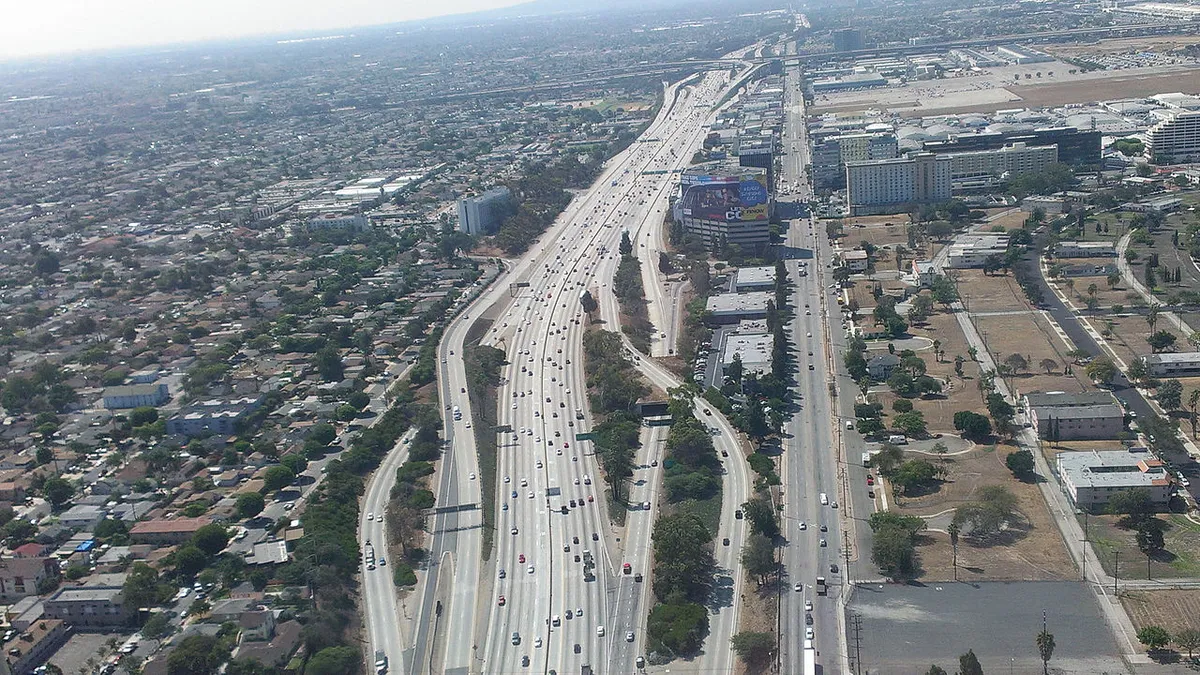Dive Brief:
- Rush hour deliveries in cities undergoing the most extensive lockdowns to slow the spread of COVID-19 are roughly 13% to 27% faster than they were before the lockdown measures went into effect, according to data provided to Supply Chain Dive by Convoy.
- Average speed for local weekday deliveries in Los Angeles increased from 37 mph in the weeks before March 4, to 47 mph since March 4 (on surface roads and highways). Driving speed for Seattle deliveries increased from 37 mph to 42 mph in the same time period. "In other markets, there has not been a statistically significant shift yet — likely because the lockdowns are too recent to detect a change," said Convoy Director of Economic Research Aaron Terrazas.
- Though Convoy's carrier-focused data does not yet reflect lockdowns in other cities, new data from transportation analytics company INRIX, emailed to sister publication Smart Cities Dive, suggests traffic speeds are up in other major cities as well. March 18 drivers (commercial and non-commercial) in Chicago drove 77% faster during rush hour periods than previous average speeds — Los Angeles drivers 53% faster, New York drivers 31% faster and Atlanta drivers 16% faster.

Dive Insight:
Logistics professionals operating amid the COVID-19 response have a complex patchwork of unprecedented conditions to navigate. But one somewhat beneficial, though certainly bittersweet, result may be faster delivery operations.
Congestion is a major source of uncertainty even in normal circumstances, so the extra speed and higher confidence in travel times can help supply chain players more efficiently and precisely plan their logistics operations. With much of Los Angeles's infamous traffic stuck at home, the streets are clearer.
California Gov. Gavin Newsom ordered all non-essential businesses in the state to cease operations Sunday. Warehouse workers, employees of logistics and distribution companies, maritime and railroad employees, private and public postal shipping workers, employees in the aviation industry (including air cargo operations) and all manner of repair workers for the relevant vehicles and equipment are considered by the state to be essential.
Even traffic deemed essential, including traffic out of the Port of Los Angeles, is down. Incoming volume at the Port of Los Angeles was down 22% year-over-year in February, which port Executive Director Gene Seroka owes to a lag in China manufacturing returning to full speed.
But less action at the port has not, so far, sent carriers away from the state. In fact, Terrazas said Convoy is seeing indications of the opposite.
"We're actually seeing enough capacity on the West Coast to handle [demand] even with the increased volume that we're seeing," he said. Ken Adamo, chief of analytics at DAT attributed a spike in spot rates directly to the crisis response.
Early indications in Convoy's data suggest carriers are heading toward the affected states. "Coming off over a year and a half when a lot of drivers are struggling, this is kind of a moment where they feel like they can finally get a little bit of business and so yeah, as they always do, they're going to where the demand is," said Terrazas.














